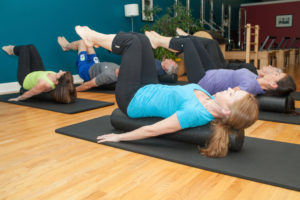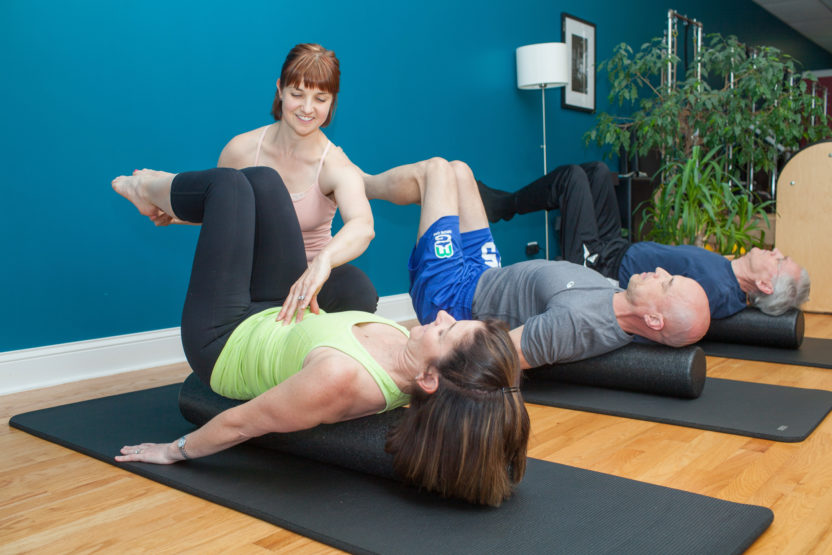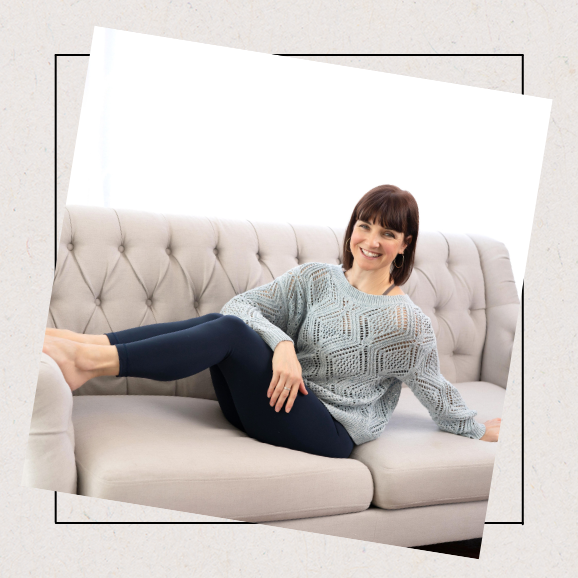Did you hate physical education classes because they made you do crunches? Crunch as defined by Merriam-Webster is, 1: to chew or press with a crushing noise, 2 : to make one’s way with a crushing noise, 3 : process; especially : to perform mathematical computations on.
 None of those definitions sound remotely relevant to Pilates. For all the strength that Pilates provides, it would be nothing without the elongation. In fact, without considering length, our basic ab curl would in fact be just a crunch. I am sure you have heard many trainers in many gyms directing you to crunch or even crush those muscles. Hopefully you won’t hear that word in our studio (maybe that’s why the thought of even crunching the numbers always makes me cringe!)
None of those definitions sound remotely relevant to Pilates. For all the strength that Pilates provides, it would be nothing without the elongation. In fact, without considering length, our basic ab curl would in fact be just a crunch. I am sure you have heard many trainers in many gyms directing you to crunch or even crush those muscles. Hopefully you won’t hear that word in our studio (maybe that’s why the thought of even crunching the numbers always makes me cringe!)
But why don’t we crunch in the Pilates studio?
One of the biggest benefits of the Pilates method is mastering the eccentric contraction. Eccentric contraction increases tension in the muscle as it lengthens. The eccentric contraction in an ab curl is the part when you are lowering your spine and head back down onto the mat. Eccentric literally means “away from the center” and this type of contraction require control. Control, also one of our Pilates principles! There have been many studies reporting the benefits of slow weight or resistence training highlighting use of the eccentric contraction.
 If you were going to do 100 crunches you would most likely do them very fast and very bouncy, recruiting mostly the rectus abdominus muscle, or more commonly called the “six pack” muscle. The rectus abdominus is located in the front of the body, is the most superficial of the abdominal muscles and has an origin at the pubic bone and insertion at the sternum. As its main responsibility is flexing the lumbar spine you can see why it is so commonly overused during abdominal work. Unfortunately the rectus abdominus does not have any direct attachment to the spine and therefore does not truly affect core stability. You could crunch your way to a really flexed low back though! You can tell you are recruiting the rectus abdomens by looking at your abdomen and if you see a “pooch” you’ve got it. Aesthetically a six pack might be your goal, but it won’t provide you with functional core strength.
If you were going to do 100 crunches you would most likely do them very fast and very bouncy, recruiting mostly the rectus abdominus muscle, or more commonly called the “six pack” muscle. The rectus abdominus is located in the front of the body, is the most superficial of the abdominal muscles and has an origin at the pubic bone and insertion at the sternum. As its main responsibility is flexing the lumbar spine you can see why it is so commonly overused during abdominal work. Unfortunately the rectus abdominus does not have any direct attachment to the spine and therefore does not truly affect core stability. You could crunch your way to a really flexed low back though! You can tell you are recruiting the rectus abdomens by looking at your abdomen and if you see a “pooch” you’ve got it. Aesthetically a six pack might be your goal, but it won’t provide you with functional core strength.
Now think about doing an ab curl like you do in your Pilates class. Slowly, mindfully, and in complete control. When you move with control you are utilizing the eccentric contraction to slow down and recruit the transverse abdominus. The transverse abdominus is the deepest layer of abdominal muscle and lays flat on the abdomen. It acts as a girdle and is commonly called the “corset” muscle as it creates support and tension around the entire midsection. It also stabilizes the pelvis and low back prior to movement. When you look at your abdomen at the midpoint of an ab curl and you see a flat stomach, you are recruiting your transverse abdominus. Engagement of the transverse abdominus will create functional core strength and give you a flat stomach!
So, when you don’t crunch and you use the transverse abdominus during the eccentric contraction, you will not only create a leaner flatter stomach, but more build more functional strength to stand taller and stabilize your pelvis and low back.


